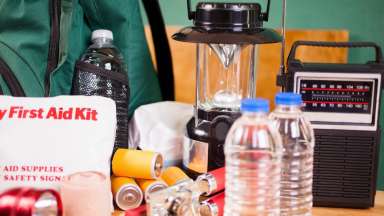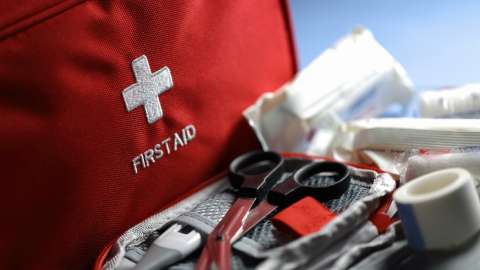First aid kits come with a fixed list of content as well as a carrying container. The key to having a first aid kit you will both use and appreciate is to make sure it fits your needs. Just as your needs will vary from situation to situation, what you expect and want out of a first aid kit will vary too. Let's address some “types” of kits to meet your needs!
What kind of first aid kit do I need?
Asking and answering “who? what? when? where? and how?” questions can help you figure out which type of first aid kit you need and what needs to go in it for your next adventure!
- Who refers to the number of people going with you and if there are any people in your group with needs or conditions that will need to be addressed in your first aid kit.
- What are you planning on doing and likely to encounter? The activity you will be participating in will shape what items you decide to include in your kit. For example, an inconvenience that hikers frequently run into is blisters. Blisters may not be a life-threatening issue on your hike, but blisters can make a great day into a bad day very quickly.
- When can be related to season or time of year. Making sure your pack is seasonally appropriate can save your life or help lighten the load by taking out items that may not be necessary. When also refers to when to use one “type” of first aid kit verse another.
- Where is this type of first aid kit best suited for? Going on land? Water?
- How long are you going outside? How should the first aid kit be packed?
The Fixed Location Kit
The goal of this kit is to always be present and accessible to the designated location. Example fixed locations could include in your vehicle or in your home. Because the location is fixed, this kit can have a hard case or even be secured in place. A fixed location kit prevents the common problem of having one first aid kit that you use for all situations. Inevitably, when you go to look for the first aid kit in the glove box only to find it is not there because it is still with your outdoor gear from the last trip. Avoid the disappearing first aid kit and purchase multiple, with one or more being fixed location kits.
Who: You and whoever is around your location
What: Be prepared whenever you are near the fixed location
When: Year-round use
Where: Put it in one place and keep it there and tell others where the fixed location kit is in case you are the injured one
How: Because you are not physically carrying this kit around, weight is not an issue, so you can have the greatest quantity and diversity of supplies as well as tools
There is no perfect first aid kit! However, there are effective and ineffective first aid kits. Ineffective first aid kits are ones that are not there when you need them, being either misplaced or left behind. Ineffective kits have outdated supplies. Effective kits are available and up to date. They have what you need without unnecessary supplies or tools.
Buy and carry the right size or “type” of first aid kit. Inspect the contents at a minimum twice a year. An easy way to remember this is to inspect at daylight savings times. This way you will be set for the spring season and heading into the fall.
The most important first aid tool is your mind. our mind provides you with the ability to know what to do with what you have at the right time. If you haven’t taken a basic first aid course, start there.


